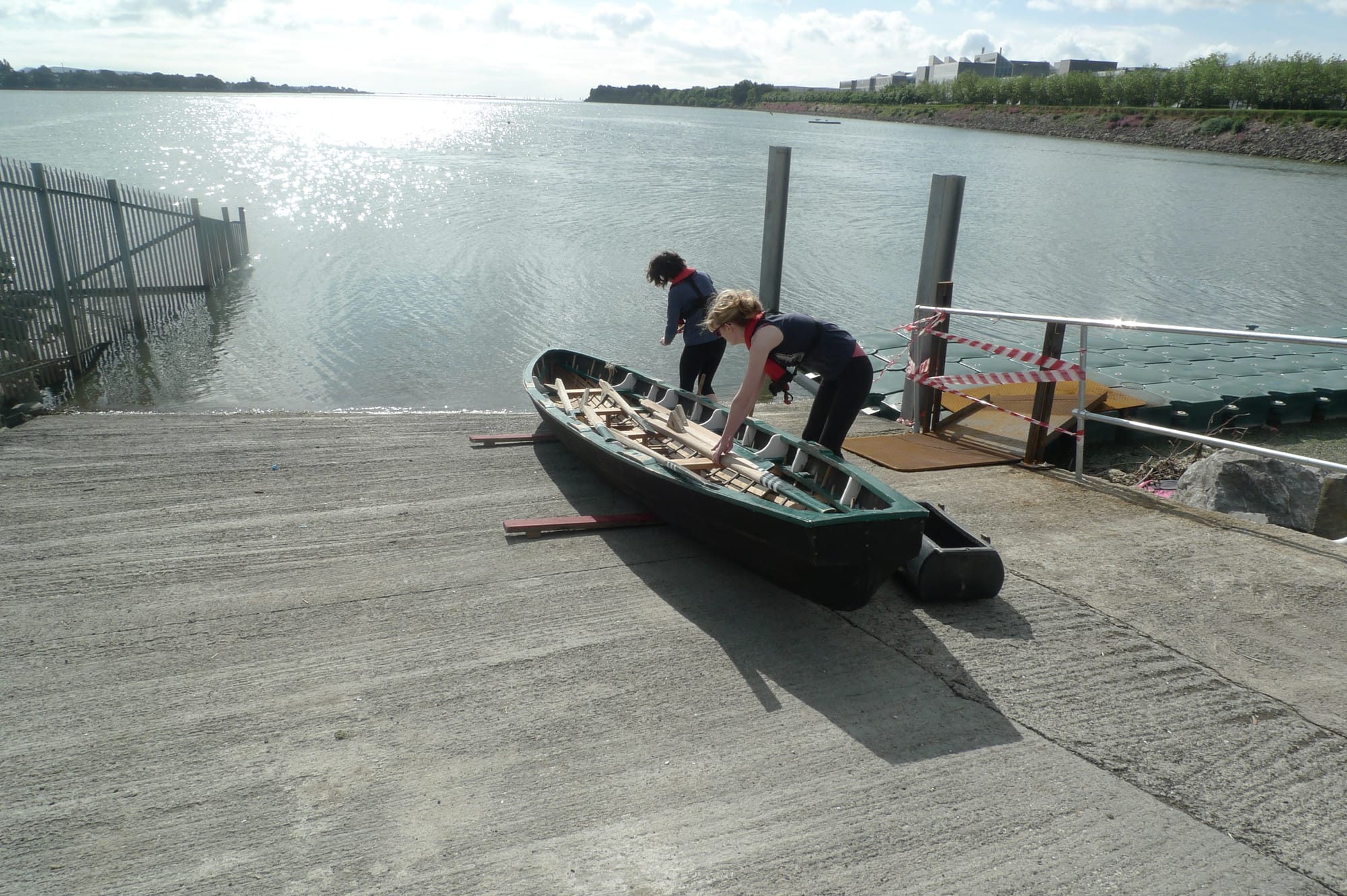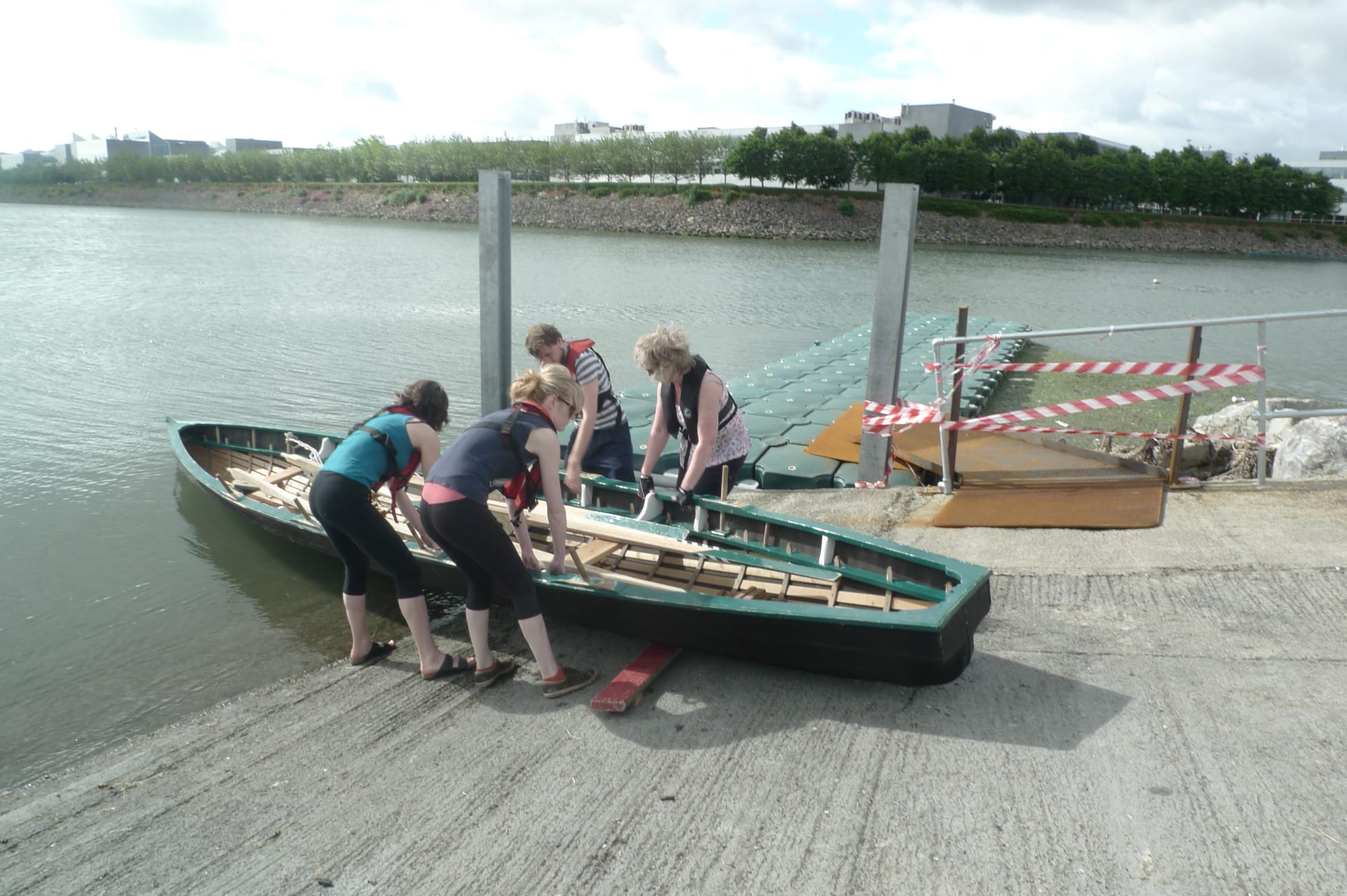What’s the best way to tell area residents about plans for a new asylum shelter nearby?
The government should tell communities directly about plans for new asylum shelters, some activists and politicians say.
Dublin water sports on a budget? Row out with East Wall’s curraching club.

There has been a noticeable paradigm shift towards fitness in the capital in recent years. You’ve probably witnessed it. You’re probably a part of it. In the evenings and on weekends, the streets, parks, and seafront promenades are bustling with walkers, joggers and cyclists.
I find myself looking on with a sort of envy at these fitness freaks, particularly the joggers and the cyclists of this world. I don’t have a bike, so cycling is out. Jogging, I’ve tried a few times, but I just can’t take to it. To be honest, I hate it. Luckily, there’s another activity that people have started to take up, one I think I might actually enjoy: rowing.
“It was massive back in the day and it’s really starting to pick up again,” says Anita Locke, one of the founders of Cumann Currach Ath Cliath, Dublin’s only currach and naomhog rowing club.
I’ve decided to haul my Dublin water sports anchor by attending the beginners-and-improvers evening that the club runs at the East Wall Water Sports Centre. It’s a mild and overcast evening, and the water on the inlet between Clontarf and East Wall is dead calm. Perfect conditions for rowing.
The place is a hive of activity. There’s a gansey-load of kids all giddy and wet-suited up, waiting to go out kayaking. A small band of men are the first out on the water in a sailing boat. Soon after them, a group of rowers head out on a skiff.
The skiff, a boat more traditional to the east coast of Ireland, is heavier than the currachs and the naomhogs which are natives of the west coast. There’s a west coast versus east coast thing going on, jokes Locke, who hails from Dingle.
Cumman Currach Ath Cliath came on the Dublin water-sports scene two years ago with two currachs which were built on site by a team led by artist and boat-builder Mark Redden. Two noamhogs, built here as well, came later.
Both types consist of a wooden frame over which animal skins or hides were once stretched. Now it’s canvas. The currachs of the club are three-seaters and each has a flat wooden transom at the stern of the boat. The naomhogs are four-seaters, each with a curved stern instead of a flat transom – or as Anita puts it, “They have a little arse.”
There’s a good crowd of about twelve down this evening, a mix of regulars and beginners. Liz, an avid member of the club, got involved in a boat-building programme in Dalkey about two years ago, and has been coming to this club ever since. She never rowed before that, but is quite the addict now.
One man, Rob, out for a walk, stops by the railings where the currachs are stored as we’re taking them out. He inquires about joining. He’s told to come on around, there’s no membership fee, he just has to pay €2. Too good a deal to pass up, Rob comes right around.
Shortly after, a similar scenario occurs as the boats are being set down on the concrete slope by the water. A young French couple walk by on the opposite side of the railings.
“How do I join?” the man asks.
“You just come around,” he was told.
“Is there a subscription fee?”
“No, you just pay €2.”
“€2? That’s great!”
He has plans tonight, but promises to be back.

The price is a big plus, according to Aoife Lucie, who’s been rowing with the club for about a year. And she’s right. You’d be hard pressed to get a cup of coffee in the city for less.
Equally appealing is the convivial nature of the club. Everyone is friendly, chatty and very welcoming of newcomers.
There’s a sense that water-sports clubs, particularly the sailing variety, can be a tad, well, elitist. Not unfounded, in my experience. A cousin of mine, a waiter, had an interview for a job at one of Dublin’s yacht clubs. Struggling to find the entrance to the club, he asked a gentleman in the car park, “How do I get in?” The man looked at him and said, “Join.”
This is definitely not the case at Cumman Currach Ath Cliath.
I step cautiously into the bow of the currach, after Fiona Hehir, who’s new to the club but has rowed before, and Mike, a stalwart who’s been rowing here a year now. Mike gives a little pep talk on how to use the oars, how you should lean right over your toes at the start of the stroke and lie all the way back at the end of the stroke. And then we’re off.
Because of the slight breeze blowing across the left side of the boat, Mike says the position of our hands should be right over left. He also says, because I’m in the bow, that I should be looking over my shoulder at our mark, a little buoy in the centre of the inlet.
I’m not the most coordinated person as it is, and with trying to remember to lean all the way over my toes and then lie all the way back through the stroke, trying to remember to keep my right hand over left (both hands are just banging off one another really), trying to remember to look over my shoulder for our mark, and at the same time trying desperately to keep in sync with the strokes of Mike and Fiona, it’s not long before my brain starts to short-circuit.
We’re almost going in circles. The boat swings to the right and then, as we correct it, swings to the left. We row along in this fashion, snaking left and right, meandering an invisible river for quite some time. For a moment we might keep it straight, but then seconds later we’re veering off again. And really, it’s all my fault.
Every now and then Mike, ahead of me in the stern, will call back to remind me of our mark.
We’ve been out about twenty minutes now and my technique seems to be worse than when we started. I concentrate on getting the stroke right and my hands get in each others’ way. I check for our mark, about a mile off to the left, and miss my stroke and fall out of rhythm. I try to get the rhythm back and I’m clashing oars with Fiona. Not a minute passes where I haven’t apologised for my clumsiness.
I’m getting tired too. My arms, not used to this sort of exertion, are getting weary. The muscles are burning. The tendons in my palms are cramping. It’s tiring, frustrating, borderline demoralising, but oddly enjoyable.
Mike is helping. He’s patient and encouraging.

After a while, we swap seats. Mike is now in the bow, I’m in the middle, and Fiona’s in the stern, where most of the steering is done.
She’s doing well; it’s coming back to her. We keep on a little straighter. Any deviation in course is solely down to me, but we’re going better. In the middle now, I don’t have to concern myself with our mark, which makes life in the currach a little simpler.
We swap over again and now I’m in the stern. With only the water in front of me, I find this position the least distracting. If I’m making a tit of myself, flapping wildly with the oars, at least there’s no one ahead of me with whom to compare. And in fairness, we seem to be doing alright.
Then we come abreast of another currach, about fifty yards to our left, in which a group led by Anita is rowing. There’s only one thing for it: a race is called. The finish line is a stump protruding from the surface of the water about a hundreds away.
Surprisingly, we get off to a great start. Going at a fair clip and keeping her straight, we open up a solid lead. Our stroke is in sync and we’ve a good rhythm going. It’s amazing how a bit of competition can sharpen your concentration.
But as we near the finishing post, we start veering again, horribly. At one point, we end up facing in the other direction back towards the club. By the time we get the currach turned round, we know we’ve lost. Mike calls a draw; Anita is having none of it.
Defeated but invigorated, we let the boat bob gently on the water to chat and catch our breath. Mike asks if I enjoyed it. I tell him yes, it’s tough, but I’ll be coming back. Fiona will too, she says.
We make our way back to shore at a slower, easier pace. We still go sideways at times, but not as much and we’re better able to correct it now.
Over to the left, I see people jogging along the Clontarf promenade. I don’t envy them a thing.
At €2 a row, a jog may be the cheaper mode of exercise, but it’s not nearly as fun.